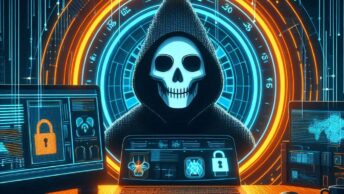On Oct 17, 2021, Jiří Vinopal published information about a weakness in the AtomSilo ransomware and that it is possible to decrypt files without paying the ransom. Slightly later, he also analyzed another ransomware strain, LockFile. We prepared our very own free Avast decryptor for both the AtomSilo and LockFile strains.
Limitation of the decryptor
During the decryption process, the Avast AtomSilo decryptor relies on a known file format in order to verify that the file was successfully decrypted. For that reason, some files may not be decrypted. This can include files with proprietary or unknown format, or with no format at all, such as text files.
How AtomSilo and LockFile Work
Both the AtomSilo and LockFile ransomware strains are very similar to each other and except for minor differences, this description covers both of them.
AtomSilo ransomware searches local drives using a fixed drive list, whilst LockFile calls GetLogicalDriveStringsA() and processes all drives that are fixed drives.
A separate thread is created for each drive in the list. This thread recursively searches the given logical drive and encrypts files found on it. To prevent paralyzing the compromised PC entirely, AtomSilo has a list of folders, file names and file types that are left unencrypted which are listed here:
| Excluded folders | |||
| Boot | Windows | Windows.old | Tor Browser |
| Internet Explorer | Opera | Opera Software | |
| Mozilla | Mozilla Firefox | $Recycle.Bin | ProgramData |
| All Users | |||
| Excluded files | |||
| autorun.inf | index.html | boot.ini | bootfont.bin |
| bootsect.bak | bootmgr | bootmgr.efi | bootmgfw.efi |
| desktop.ini | iconcache.db | ntldr | ntuser.dat |
| ntuser.dat.log | ntuser.ini | thumbs.db | #recycle |
| Excluded extensions | |||||
| .hta | .html | .exe | .dll | .cpl | .ini |
| .cab | .cur | .cpl | .drv | .hlp | .icl |
| .icns | .ico | .idx | .sys | .spl | .ocx |
LockFile avoids files and folders, containing those sub-strings:
| Excluded sub-strings | |||
| Windows | NTUSER | LOCKFILE | .lockfile |
In addition to that, there is a list of 788 file types (extensions), which won’t be encrypted. Those include .exe, but also .jpg, .bmp and .gif. You may noticed that some of them are included repeatedly.
The ransomware generates RSA-4096 session keypair for each victim. Its private part is then stored in the ransom note file, encrypted by the master RSA key (hardcoded in the binary). A new AES-256 file key is generated for each file. This key is then encrypted by the session RSA key and stored at the end of the encrypted file, together with original file size.
Each encrypted file contains a ransom note file with one of the names:
README-FILE-%ComputerName%-%TimeStamp%.htaLOCKFILE-FILE-%ComputerName%-%TimeStamp%.hta
Encrypted files can be recognized by the .ATOMSILO or .lockfile extension:
When the encryption process is complete, the ransom note is shown to the user. Each strain’s ransom note has its own look:
How to use the Decryptor
To decrypt your files, please, follow these steps:
- Download the free decryptor. The single EXE file covers both ransomware strains.
- Simply run the EXE. It starts in form of wizard, which leads you through configuration of the decryption process.
- On the initial page, you can see a list of credits. Simply click “Next”
- On the next page, select the list of locations which you want to be decrypted. By default, it contains a list of all local drives.
- On the third page, you can select whether you want to backup encrypted files. These backups may help if anything goes wrong during the decryption process. This option is turned on by default, which we recommend. After clicking “Decrypt”, the decryption process begins.
- Let the decryptor work and wait until it finishes.
Credits
We would like to thank Jiří Vinopal for sharing analysis of both ransomware strains.
IOCs
| SHA | filename |
d9f7bb98ad01c4775ec71ec66f5546de131735e6dba8122474cc6eb62320e47b | .ATOMSILO |
bf315c9c064b887ee3276e1342d43637d8c0e067260946db45942f39b970d7ce | .lockfile |




